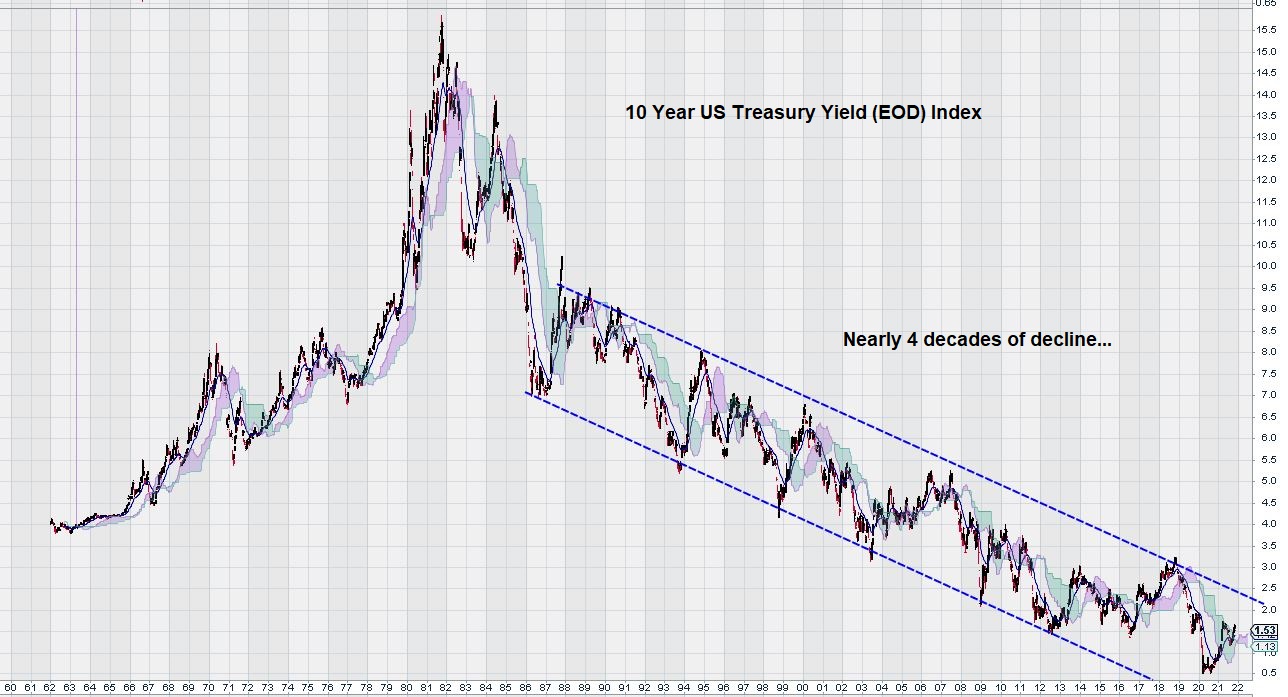We begin today’s look at the 10-Year US Treasury Yield (EOD) Index from a most unusual place: a high school chemistry lab.
Most of us remember titration experiments simply because they were among the most visual and note-worthy of our newfound knowledge of chemistry. The most common titration involves calculating the molarity (concentration) of an unknown acid solution by adding a base of known concentration (the titrant).
Usually, an indicator solution of phenolphthalein is added, and when the endpoint of the titration is reached, it turns bright pink. Then it is a simple matter to find the concentration of the unknown acid by calculation.
If only it were that easy for the FED to apply the same scientific approach to their interest rate policy.
As of right now, the FED has a plan to slowly withdraw its stimulus program by reducing its purchases of Treasury securities by $10 billion per month (the FED currently has a massive monthly commitment to purchase $120 billion of government bonds).
So, let’s look at the long-term chart for the 10-Year US Treasury Yield:
Before deciding to embark on a policy to raise interest rates, the FED is first going to carefully withdraw its bond-buying support at the monthly US Treasury auctions. This action will give markets time to adjust expectations over time, and the aim is to ensure that there are no sudden reactions that would result in a loss of confidence.
The “benchmark” 10-Year US Treasury Yield (EOD) Index has provided a chart pattern that should help investors understand why the FED is so cautious in its language when it comes to any discussion of interest rates. We can see a trend channel that is almost four decades in duration that captures the interest policies of the FED during both Democratic and Republican administrations. The trend is clear for everyone to see.
This is the time to recall what happened in our high school chemistry experiment that introduced us to the concept of titration.
Remember how “just one more drop” changed everything – our clear solution turned bright pink, and the endpoint was reached.
Knowing this, the FED will raise rates at a pace made for snails.
They will be extremely cautious when raising rates to levels that approach the upper trend channel note in our very long-term weekly chart.
They know that they are “juggling dynamite.”
The FED does not want to plunge the US economy into a prolonged recession or, worse yet – a depression. This is why, just like in the chemistry lab, they will raise rates “one drop at a time.”
But, once the “endpoint” is reached – there is no going back.
– John Top, the technical trader
(PS – It is probably a good time to search the term “Minsky Moment” and keep its definition close at hand as we move into next year with more, not less, uncertainty.)













